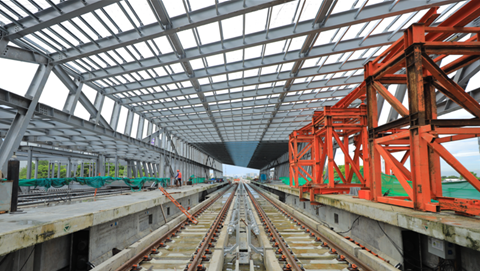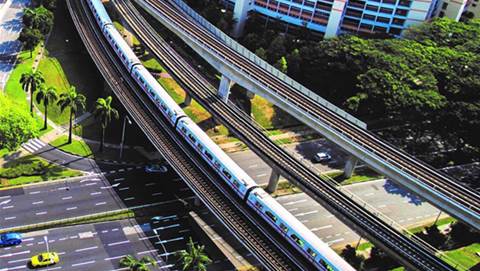As we move to the end of 2020, a consensus across most research analysts is that while the coronavirus pandemic has slowed global commercialisation of 5G, the roll-out is continuing, with leading governments, countries and regions still pushing forward with the next generation of mobile internet.
Globally, various COVID-19 isolation measures have made it more difficult to deploy 5G base stations. Some countries have announced the extension of 5G spectrum bidding plans which has also reduced consumers’ willingness to adopt 5G.
The US, China, South Korea and Japan are the countries that lead the way in 5G’s commercial roll-out.
Here’s a summary of key findings on 5G’s progress across the key regions and countries:
Asia-Pacific: By 2025, 50% of the total global 5G connections will be in the Asia-Pacific (APAC) region and the US, predicted Frost & Sullivan. The APAC region is a key driver of adoption, with strong collaboration between local governments and industry players enabling many successful deployments in 2020.
In South Korea and China, where 5G deployments are case studies for the world, the relevant spectrum band was already allocated in June 2018 and 2019, ahead of many other countries.
These cross-industry collaborations in the APAC region have resulted in a more cohesive ecosystem for these industries, significantly driving the deployments of 5G. For example, with the Covid-19 pandemic accelerating the use of 5G in the healthcare market, AIS, an operator in Thailand, launched 5G-enabled robots in hospitals to provide remote care for Covid-19 patients.
South Korea: South Korea has established itself as the early market-leader for 5G development with funding from various private and public entities, according to market researcher Valuates.
It is expected that most of upcoming investments in the country will concentrate on the implementation of next-generation media and entertainment infrastructure, transport and logistics, healthcare, and manufacturing.
Japan: NTT Docomo, Softbank and KDDI – Japan’s three largest telcos – all launched5G earlier this year. There has been limited impact from the coronavirus as the telcos were ahead of schedule in building the necessary infrastructure, although some negotiations for new base stations could be postponed. For example, Rakuten has postponed the launch of its 5G mobile network to the last quarter of 2020.
China: China is ahead and has emerged as one of the most active 5G-promoting countries. The country is projected to be one of the top four markets driving 5G growth in Asia, and has taken an approach of ‘build first, and then applications will come’.
Significant subsidies have been provided to grow the ecosystem and 5G spectrum was awarded to China Mobile, China Telecom and China Unicom in June last year. The first 5G networks went live in November 2019.
China is projected to become the largest 5G market in the world by end-December 2020, with an estimated 600,000 sites ready.
5G auctions will be announced in India in 2021, with telcos worried about high reserve prices for spectrum
India: All the major telcos – Reliance Jio, Bharti Airtel and Vodafone-Idea – are partnering with various equipment vendors for trials this year and to test out the kind of services that could be made available. 5G will be the significant upgrade since mobile telephony started in India, back in the mid-1990s.
5G auctions are expected to be held by early 2021. A big concern among the telcos is the high reserve prices of auctions, much higher than in other countries around the world.
Europe: The 5G development market is improving the usability of M2M/IoT connections and the rise in demand for mobile broadband services in Europe. However, the slow speed of digitisation is hindering 5G’s growth
This is compounded by the lack of clarity in the EU roadmap for 5G, lack of affordable spectrum and slow pace of spectrum auctions due to the pandemic restricting auctions to online or on-site with strict precautionary measures in place.
Restrictions that some governments have imposed on Huawei have affected operators who are now forced to re-negotiate and look for alternative equipment providers.
The US: The introduction of 5G is expected to bring about massive transformations in the US technology, media and telecom industries. Although the country is making strides in promoting the 5G industry with new spectrum allocations, operators are still searching for enterprise applications that will make 5G profitable.
They are now swopping 4G RANs with 5G RANs as an inexpensive way to boost 5G smartphone adoption.
As a reference, 4G growth was driven largely by higher use of both voice and messaging services, leading to more user engagement and higher data use levels. 5G is expected to have the same, if not a larger, impact.
5G still a game-changer
Across the board, while some deployments have been delayed, 5G as a game-changing technology has moved from drawing board to reality.
ABI Research reported that 114 5G networks were already up and running globally as at end-June 2020. 5G-capable handsets are being made available from Samsung, Apple, Huawei, and others, which will further prime the amount of traffic being generated.
5G will continue to be a compelling proposition offering lower latency, higher capacity and increased bandwidth, enabling greater flexibility and cost reductions and making viable applications that cannot be operated using current wireless technologies.
However, this will take a little more time as countries continue to manage the impact of the pandemic and telcos continue to seek monetisation benefits from emerging 5G applications.
For mobile carriers, network implementation will require significant investments and be phased, with each operator developing its own timeline, strategies and options. The architectural transformation will be complex and multi-layered, requiring public and private networks and spectrum sectors working in aggregate globally.
It will be a little bit more arduous, but 5G remains on track as go into a new year.
About Raymond Tan
As the Editor in Chief, Raymond Tan is a seasoned veteran in the technology, media, entertainment, broadcast and travel industries, covering enterprises, telco, government, SMEs and start-ups in his publishing career. He has worked in media organisations such as CMP Business Media, Questex and Editech International across various capacities ranging from bureau chief, editor to publisher, representing tech titles that include Asia Computer Weekly, Enterprise Innovation, Network World Asia, Asia Pacific Broadcasting and Telecom Asia.









